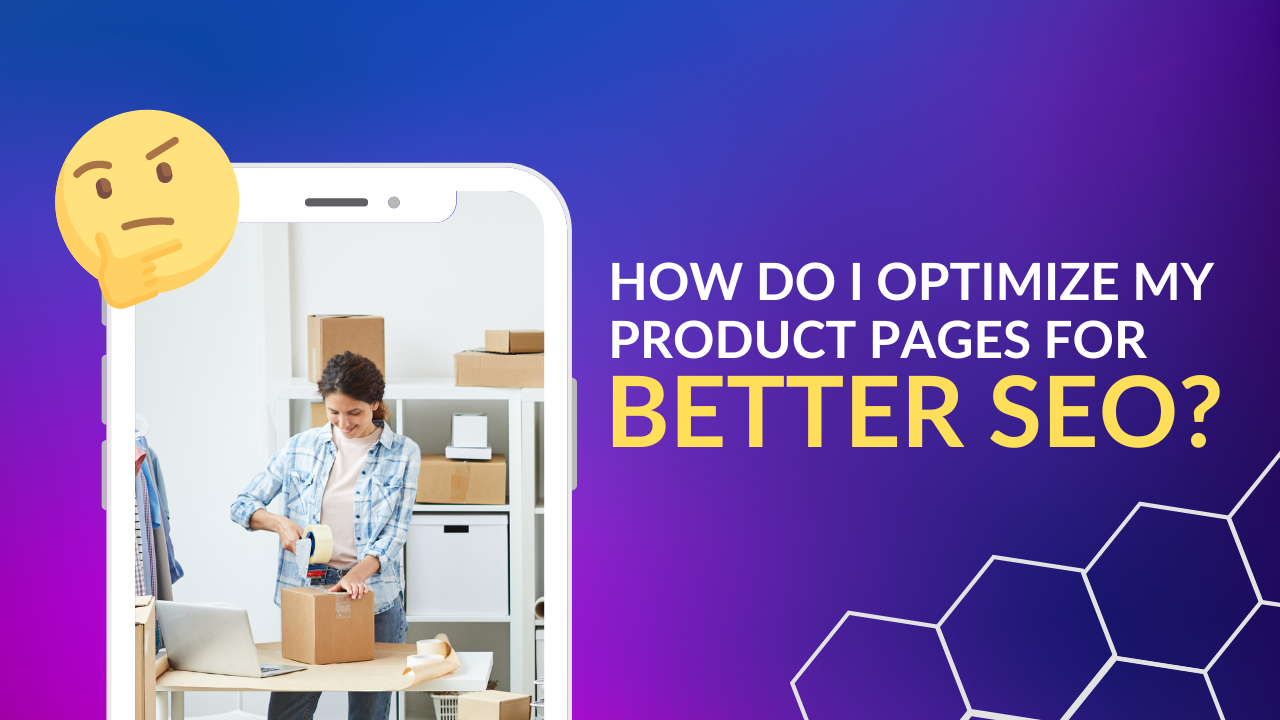10 Ways to Optimize Product Pages for SEO: A Complete Guide
 Shivanshi Singh
Shivanshi Singh
Introduction
Product pages are the backbone of any e-commerce website. Ensuring that these pages are optimized for search engines can significantly boost your site’s visibility, drive more organic traffic, and ultimately increase sales.
This guide will walk you through the essential steps to optimize your product pages for SEO.
1. Keyword Research
Identify Primary Keywords: Start by identifying the primary keywords that potential customers use when searching for products like yours. Tools like Google Keyword Planner, Ahrefs, or SEMrush can help.
Use Long-Tail Keywords: Incorporate long-tail keywords that are more specific and have less competition. These often lead to higher conversion rates.
Understand Search Intent: Ensure that the keywords you choose align with the search intent of your target audience, whether they are looking for information, comparisons, or making a purchase.
2. Optimizing Title Tags and Meta Descriptions
Craft Compelling Title Tags: Include your primary keyword in the title tag. Keep it concise (50-60 characters) and make sure it accurately reflects the content of the page.
Write Persuasive Meta Descriptions: Although not a direct ranking factor, a well-crafted meta description can improve click-through rates. Include the primary keyword and a compelling call-to-action (CTA) within 150-160 characters.
3. Product Descriptions
Write Unique and Descriptive Content: Avoid using manufacturer descriptions. Write unique, engaging content that describes the product’s features, benefits, and use cases.
Incorporate Keywords Naturally: Place your primary and secondary keywords naturally within the product description without keyword stuffing.
Focus on User Experience: Ensure that the description answers common customer questions and provides value, which can reduce bounce rates and improve SEO.
4. Image Optimization
Use High-Quality Images: Ensure that your product images are high-resolution and visually appealing.
Optimize Alt Text: Include descriptive alt text for each image, incorporating relevant keywords to help search engines understand the image content.
Compress Images: Use image compression tools to reduce file size without sacrificing quality, which will improve page load speed.
5. URL Structure
Create SEO-Friendly URLs: Keep URLs short, descriptive, and include the primary keyword. Avoid unnecessary numbers or special characters.
Use Hyphens to Separate Words: This makes URLs more readable for both search engines and users.
Avoid Dynamic URLs: Where possible, use static URLs as they are more SEO-friendly.
6. Internal Linking
Link to Related Products: Use internal links to connect related products, which can help with keyword ranking and keep visitors on your site longer.
Anchor Text Optimization: Use descriptive anchor text that includes relevant keywords to improve the SEO value of the linked pages.
Ensure a Logical Structure: Organize internal links so that search engines can easily crawl and index your pages.
7. Customer Reviews and Ratings
Encourage Customer Reviews: Positive reviews can improve trust and credibility, which can lead to higher conversions and better SEO.
Optimize Review Content: Allow user-generated content like reviews to be crawled by search engines. Include keywords in the review section to improve relevancy.
Use Structured Data Markup: Implement Schema markup for reviews to enhance your search engine listings with rich snippets.
8. Mobile Optimization
Ensure Responsive Design: Your product pages should be mobile-friendly, adjusting seamlessly across different screen sizes.
Optimize for Mobile Speed: Compress images, minimize redirects, and leverage browser caching to ensure fast load times on mobile devices.
Mobile-Friendly Checkout Process: Simplify the checkout process for mobile users to reduce cart abandonment rates and improve conversions.
9. Page Load Speed
Optimize Server Response Time: Choose a reliable hosting provider and consider using a Content Delivery Network (CDN) to reduce server response time.
Minimize HTTP Requests: Reduce the number of elements on your page, such as scripts, images, and CSS, to speed up loading times.
Enable Browser Caching: Cache resources so that your pages load faster for repeat visitors.
10. Structured Data and Rich Snippets
Implement Product Schema Markup: Use Schema.org markup to provide search engines with additional information about your products, such as price, availability, and ratings.
Enhance SERP Visibility: Rich snippets can make your listings stand out in search results, leading to higher click-through rates.
Test Structured Data: Use Google’s Rich Results Test tool to ensure your structured data is correctly implemented.
Conclusion
Optimizing your product pages for SEO is a multifaceted process that requires attention to detail and ongoing effort. By implementing these best practices, you can enhance your product pages' visibility, attract more organic traffic, and ultimately increase your sales. Digital marketing training in Delhi, Noida and other cities across India can help you master these strategies and drive results. Remember, SEO is a long-term investment, so continue to monitor and refine your strategies for sustained success.
Subscribe to my newsletter
Read articles from Shivanshi Singh directly inside your inbox. Subscribe to the newsletter, and don't miss out.
Written by

Shivanshi Singh
Shivanshi Singh
I am a Digital Marketer and Content Marketing Specialist, I enjoy technical and non-technical writing. I enjoy learning something new. My passion and urge is to gain new insights into lifestyle, Education, and technology.